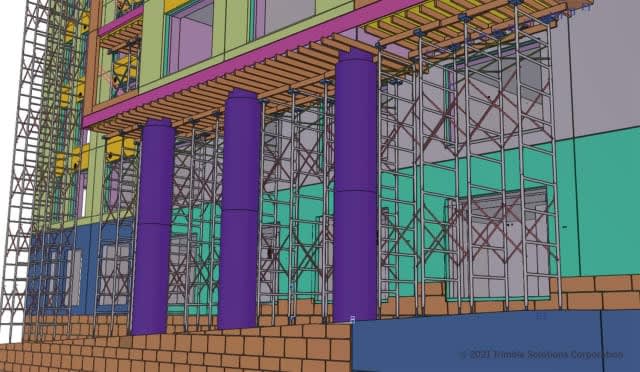Nitesh Sadashiva
Civil/Environmental
- Jan 9, 2020
- 33
Hello all,
I was checking the knee brace connection where brace was framing to beam bottom flange at top end and to grout filled CMU wall at the bottom end. While connecting brace to CMU wall, we are to use end plate with post installed anchors and brace gusset will be field welded to embed plate. When I check the capacity table of post installed anchors in the product technical sheet, it shows ultimate load and allowable load. Initially my understanding was ultimate load indicates LRFD capacity and allowable load indicates ASD capacity. But the ultimate load in technical sheet table is 5 times larger than the allowable load. In a normal steel connection, the difference between ASD and LRFD is 1.5 times. Now if my loads are in LRFD, can I take the ultimate load capacity from the table? Then if my loads are ASD it is not justifiable to consider allowable loads as it give 5 times less capacity where the load is reduced only by 1.5 times. Please see the attached document for the technical sheet table. As I am new to this post installed anchor connections, please forgive me if I am asking something blunder. Your help will be much appreciated.
[URL unfurl="true"]https://res.cloudinary.com/engineering-com/image/upload/v1648544400/tips/SIMPSON_TITEN-_SREW_ANCHORS_wdfevl.pdf[/url]
I was checking the knee brace connection where brace was framing to beam bottom flange at top end and to grout filled CMU wall at the bottom end. While connecting brace to CMU wall, we are to use end plate with post installed anchors and brace gusset will be field welded to embed plate. When I check the capacity table of post installed anchors in the product technical sheet, it shows ultimate load and allowable load. Initially my understanding was ultimate load indicates LRFD capacity and allowable load indicates ASD capacity. But the ultimate load in technical sheet table is 5 times larger than the allowable load. In a normal steel connection, the difference between ASD and LRFD is 1.5 times. Now if my loads are in LRFD, can I take the ultimate load capacity from the table? Then if my loads are ASD it is not justifiable to consider allowable loads as it give 5 times less capacity where the load is reduced only by 1.5 times. Please see the attached document for the technical sheet table. As I am new to this post installed anchor connections, please forgive me if I am asking something blunder. Your help will be much appreciated.
[URL unfurl="true"]https://res.cloudinary.com/engineering-com/image/upload/v1648544400/tips/SIMPSON_TITEN-_SREW_ANCHORS_wdfevl.pdf[/url]




